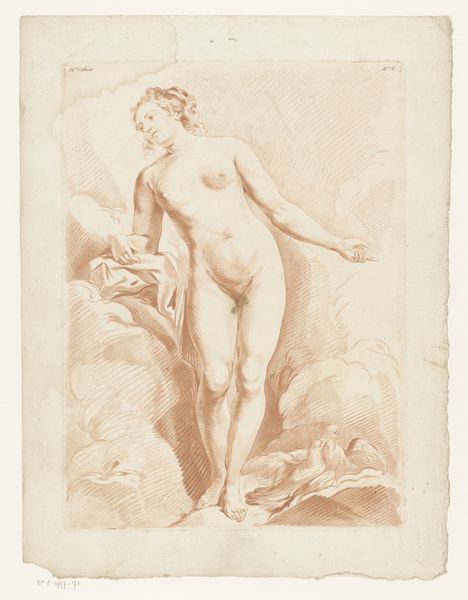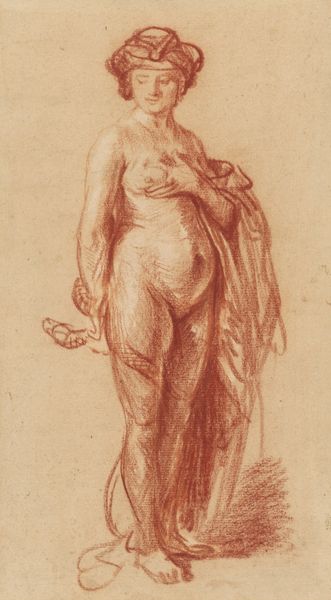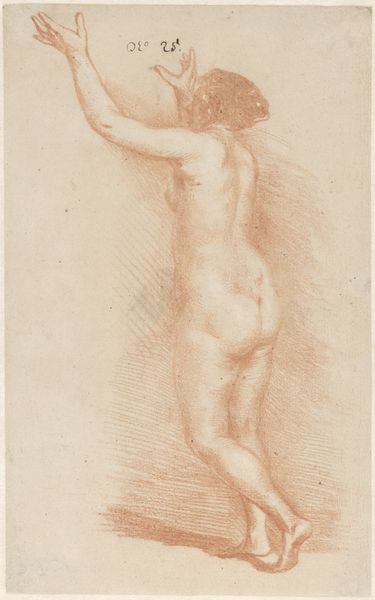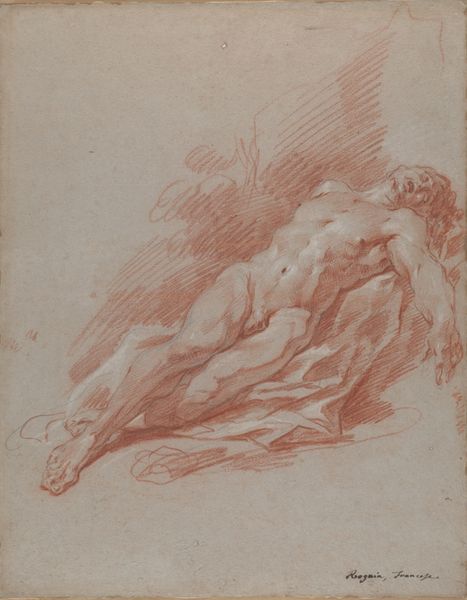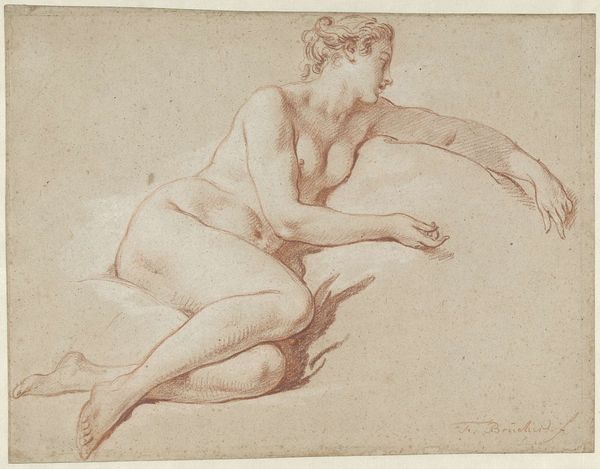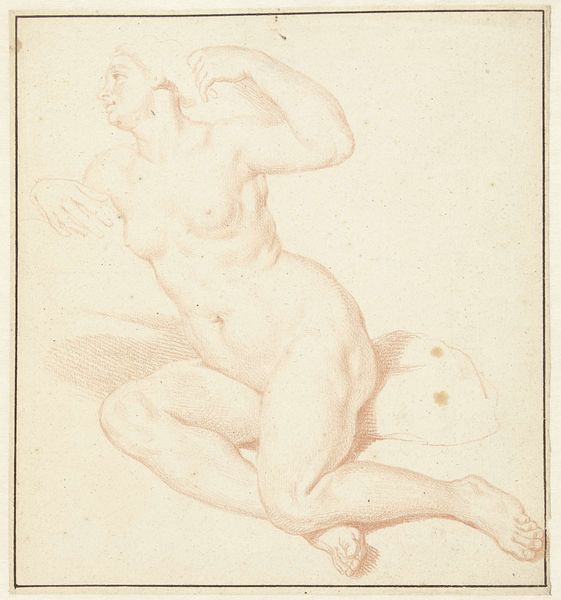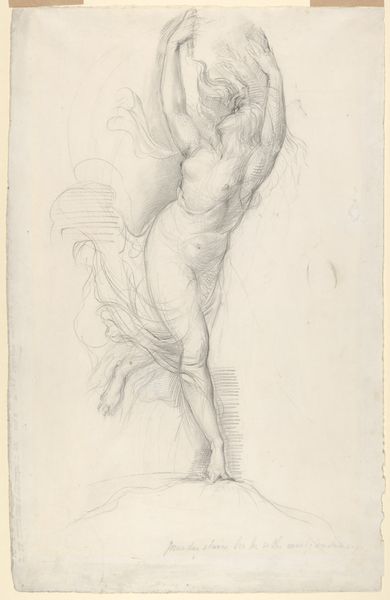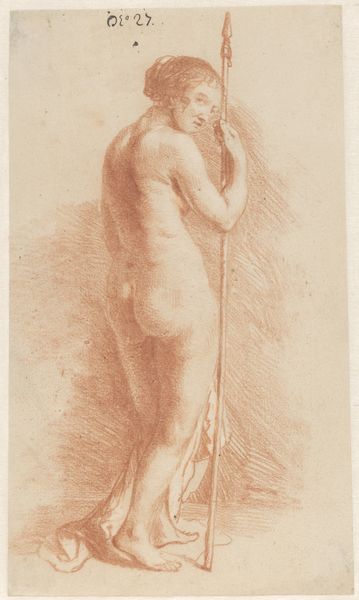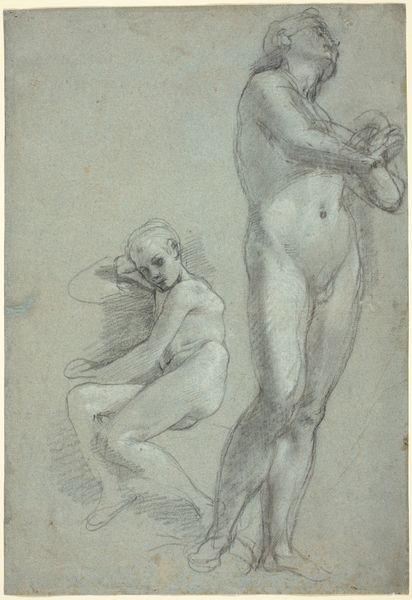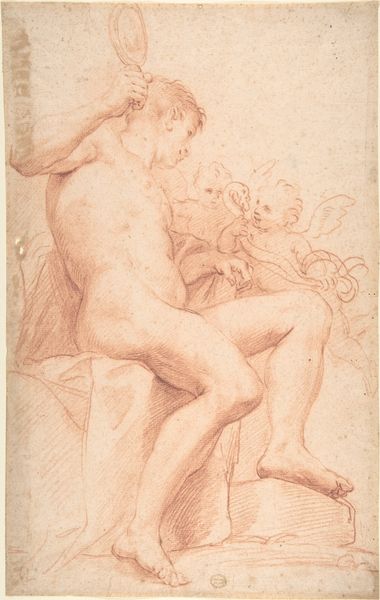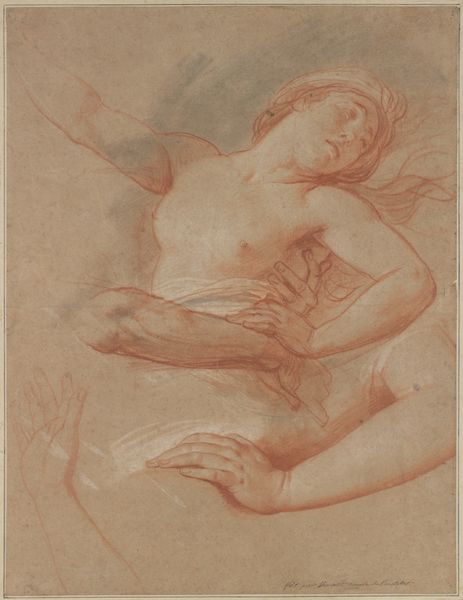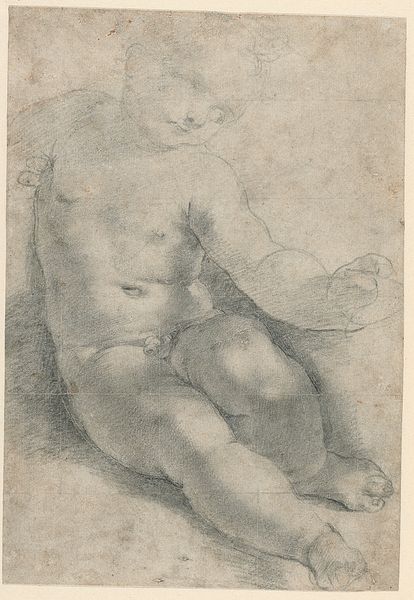
drawing, red-chalk, chalk
#
drawing
#
baroque
#
red-chalk
#
figuration
#
pencil drawing
#
chalk
#
nude
Copyright: Public Domain
Curator: We’re looking at “Sitzender weiblicher Akt nach rechts”, a red-chalk drawing housed right here in the Städel Museum and attributed to Francesco Zuccarelli. It depicts a seated, nude woman facing to the right. Editor: It strikes me as an incredibly gentle work. The softness of the chalk really lends itself to the curves of the figure, giving a sense of tranquility. Though the face is small, you can see the woman seems to be in quiet contemplation. Curator: The use of red chalk was very popular during the Baroque period, especially for preparatory drawings. Zuccarelli, a prominent painter of landscapes and history scenes, would likely have used such studies to refine his ideas about composition and the rendering of the human form. Editor: It’s interesting to consider the male gaze in this image. While ostensibly an anatomical study, there is this softness, this...vulnerability. What did the artist wish to convey? What were his intentions depicting the female body in this way? Curator: The practice of depicting nude figures, especially female nudes, was steeped in academic tradition. Artists would sketch from life, often using models to explore idealized forms inspired by classical sculpture. This emphasis on classical ideals served to reinforce notions of beauty, of a constructed social ideal. Editor: But that construction always bears scrutiny. What narratives are excluded in the celebration of this supposedly universal form? I wonder what the experience was of the model posing, knowing that she may be used for a larger canvas later. How can that context not change what the drawing means to us now? Curator: The institutional and economic realities of art production undoubtedly influenced the representation of the female nude. These drawings would eventually find their way into academies and private collections, contributing to the cycle of artistic training and taste formation, which then shapes popular standards. Editor: Seeing it that way invites us to critically reflect on who gets to look, who is being looked at, and who is left out of the frame entirely. Thinking about all of that challenges and, perhaps, complicates any easy experience with this beautiful piece. Curator: Absolutely. Placing works like Zuccarelli's drawing within that broader social and historical frame enables us to have richer and ultimately more relevant dialogues about art, representation, and power. Editor: It’s a vital thing, that context. To unpack history’s whispers and to weave the unspoken into how we understand these figures of the past.
Comments
No comments
Be the first to comment and join the conversation on the ultimate creative platform.


